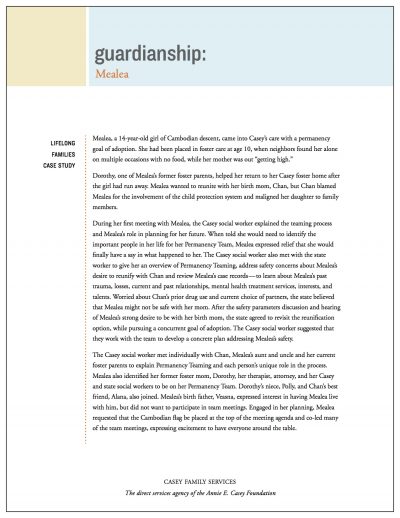
Mealea came into Casey’s care with a permanency goal of adoption after being in foster care from ages 10 to 14. She had come from tough situations at home and reunification with her mother was not an option. After Mealea ran away from one of her former foster parents, the foster parents decided to help her return to a Casey foster home.
From her first meeting with Mealea, the Casey social worker explained the teaming process and Mealea’s role in planning for her future. The process brought Mealea’s wants and needs to the forefront to achieving permanency, and the Casey social worker also met with the state worker to brief her on all of the information about the teaming process and Mealea’s case specifically.
This case study explains Mealea’s experience and the steps Casey Family Services took to determining and achieving her permanency goal. Mealea's case study reinforces the values, principle components and benefits of the model. The Lifelong Families model is intended to serve as a method of improving foster care practice within private child welfare agencies and advancing permanency outcomes for older youth with high levels of need.
Mealea identified the important people in her life to be a part of her permanency team, which strove to identify and achieve the result that Mealea wanted most: reunification with her birth mother. Through extensive conversations within the team, Mealea realized that reunification was not the best option.
We hope you'll find value in this report. We’d love to get a little information from you, which we'll use to notify you about relevant new resources.